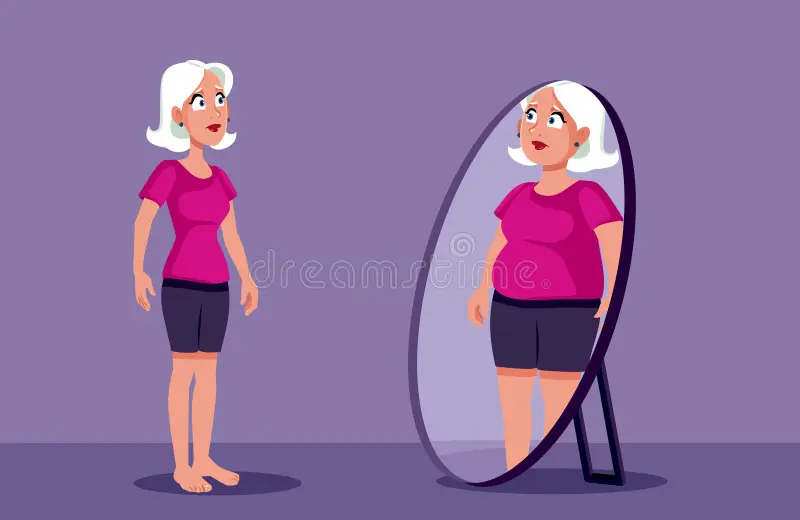What Is Body Dysmorphic Disorder?
Body dysmorphic disorder is classified in the Diagnostic and Statistical Manual of Mental Disorders, Fifth Edition (DSM-5) as an obsessive-compulsive–related disorder characterized by excessive preoccupation with one or more perceived defects or flaws in physical appearance, which are not observable or appear slight to others. Individuals with BDD often believe they look ugly or abnormal, despite reassurances from others to the contrary.
This condition affects approximately 1–2 percent of the general population, with similar rates among men and women. Onset frequently occurs during adolescence, a period marked by heightened concern about body image; however, BDD can emerge at any age and may persist chronically without appropriate intervention.
Signs and Symptoms
Preoccupations
At the core of BDD lies an obsessive focus on perceived appearance flaws. Sufferers typically spend at least one hour per day—often much more—ruminating on these flaws, which may involve skin blemishes, nose shape, hair thinning, or muscle size (in the case of muscle dysmorphia). These preoccupations generate intense anxiety, shame, and a conviction that their defect is noticeable and repulsive to others.
Repetitive Behaviors
To manage distress, individuals engage in repetitive behaviors or mental rituals, such as:
- Mirror checking (excessive scrutiny of appearance)
- Camouflaging (using makeup, clothing, or posture to hide flaws)
- Skin picking or reassurance seeking
- Comparing appearance to others
- Avoiding social situations
These behaviors often exacerbate the preoccupation, creating a vicious cycle of anxiety and compulsive rituals.
Causes and Risk Factors
Psychological Factors
Cognitive-behavioral models emphasize maladaptive beliefs about appearance, perfectionism, and intrusive thoughts. Individuals with BDD often hold rigid standards of beauty and overvalue appearance in their self-worth. Early life experiences, such as teasing about looks or childhood trauma, may contribute to rigid body-related beliefs and heightened vulnerability.
Biological Factors
Genetic studies indicate familial aggregation of BDD and related disorders (e.g., obsessive-compulsive disorder), suggesting a heritable component. Neurobiological research implicates serotonergic dysfunction, supporting the efficacy of serotonin-reuptake inhibitors (SRIs) in treatment.
Social and Cultural Influences
Societal emphasis on physical perfection—amplified by media and social networks—can intensify body dissatisfaction. Airbrushed images and filtered selfies promote unattainable standards, fueling preoccupation with minor imperfections. Campaigners like Kitty Wallace highlight how digitally altered images exacerbate BDD symptoms by distorting body ideals.
Impact on Daily Life
Emotional Consequences
The relentless focus on appearance can lead to chronic anxiety, shame, depression, and feelings of worthlessness. Many individuals with BDD experience low self-esteem and severe distress during social interactions, anticipating judgment or ridicule.
Social and Occupational Functioning
BDD often interferes with work, academic performance, and personal relationships. Avoidance of social situations—due to fear of judgment—can result in isolation and strain on interpersonal connections. In severe cases, individuals may take medical leave or drop out of school.
Suicidal Ideation and Self-Harm
Alarmingly, BDD carries a high suicide risk. Research estimates that up to 80 percent of those with BDD experience suicidal thoughts, and around 25–30 percent attempt suicide at least once. Feelings of hopelessness and the belief that no intervention can remedy perceived flaws contribute to this elevated risk.
Diagnosis
DSM-5 Criteria
According to DSM-5, key diagnostic criteria include:
- Preoccupation with perceived physical defects not observable to others.
- Repetitive behaviors or mental acts in response to appearance concerns.
- Significant distress or impairment in social, occupational, or other areas of functioning.
- Appearance concerns not better explained by an eating disorder.
A specifier for muscle dysmorphia is applied when the individual is preoccupied with the idea that their body build is too small or insufficiently muscular.
Assessment Tools
Clinicians may use structured interviews (e.g., the Body Dysmorphic Disorder Diagnostic Module) and self-report scales (e.g., the Yale-Brown Obsessive Compulsive Scale modified for BDD) to assess symptom severity and treatment planning.
Treatment and Support
Psychotherapy
Cognitive-Behavioral Therapy (CBT)
CBT is the first-line psychotherapeutic approach, focusing on:
- Psychoeducation about BDD
- Cognitive restructuring to challenge distorted beliefs
- Exposure and response prevention (ERP) to reduce compulsive behaviors
- Mirror retraining to alter negative body image habits
Meta-analyses show CBT yields significant reductions in symptom severity and distress, with benefits maintained at follow-up.
Other Therapies
Emerging approaches include acceptance and commitment therapy (ACT), mindfulness-based interventions, and family-based therapy, particularly beneficial for adolescents.
Medication
Selective serotonin-reuptake inhibitors (SSRIs) are the pharmacological standard of care, demonstrating efficacy in reducing preoccupations and compulsive behaviors. Commonly prescribed SSRIs include fluoxetine, sertraline, and escitalopram. Medication may be combined with psychotherapy for optimal outcomes.
Self-Help and Lifestyle Changes
- Regular exercise can alleviate anxiety and depression, though excessive exercise should be avoided.
- Stress-management techniques, such as relaxation training and mindfulness.
- Limiting comparison on social media and engaging in activities that foster self-acceptance.
Support Resources
Professional Support
- Mental health clinicians trained in BDD-specific CBT and pharmacotherapy.
- Treatment centers offering specialized programs for obsessive-compulsive and related disorders.
Peer and Online Support
Participating in support groups—either in person or online—can reduce isolation and provide practical coping strategies. Examples include:
- BDD Foundation Online Support Groups.
- International OCD Foundation’s BDD Recovery Online Support Group.
- Fear To Courage Recovery from BDD Support Group.
Family and Caregiver Involvement
Educating family members about BDD and involving them in therapy can improve treatment adherence and provide essential emotional support. Family-focused interventions address communication patterns and help loved ones understand how to respond compassionately to BDD behaviors.
Conclusion
Body dysmorphic disorder is a complex psychiatric condition marked by obsessive preoccupation with perceived flaws and repetitive behaviors that severely disrupt daily life. Understanding BDD—its psychological, biological, and social roots—is vital for early recognition and intervention. Evidence-based treatments, particularly CBT and SSRIs, offer relief from debilitating symptoms. Moreover, fostering supportive environments through professional care, peer networks, and family involvement enhances recovery. With awareness, compassionate care, and targeted therapies, individuals with BDD can achieve meaningful improvements in self-acceptance and overall wellbeing.



